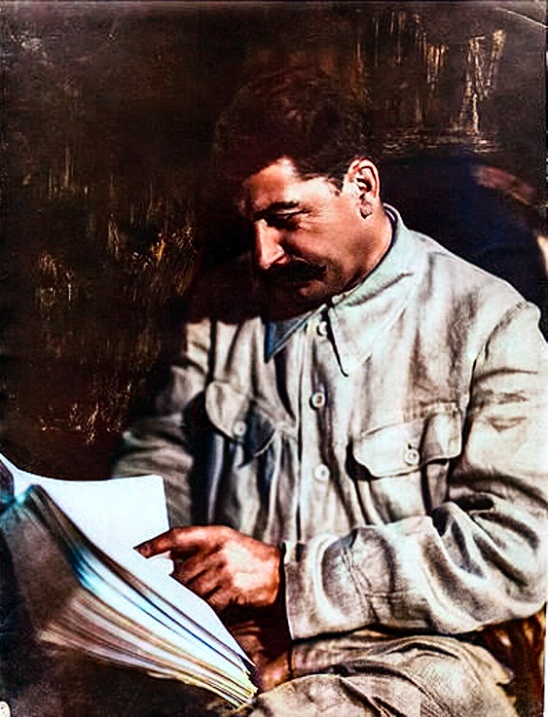

Plenty of people left the concentration camps in Europe to go perform similar ethnic cleansing operations in Palestine. Unfortunately experiencing genocide doesn’t make one understand not to perpetrate it


Plenty of people left the concentration camps in Europe to go perform similar ethnic cleansing operations in Palestine. Unfortunately experiencing genocide doesn’t make one understand not to perpetrate it


Islamic Resistance in Syria allegedly claims two rockets fired into the occupied golan heights
Take this with a grain of salt though, three groups have claimed it, while this video may be misrepresented and this faction has its own question marks about it. Could be a Syrian version of the Lebanon rockets
https://t.me/CoastSyrian24/2519
Renewed Israeli bombardment in southern Syria is causing an exodus of civilians


man, Hunter Schafer…


by any chance do you have an AMCA premium rss feed?


o7 in my haste to spread News I forgot to claim my Crown… smdh


Please also post this in the next mega, this one is about to be locked


SDF to free 250 jihadists in exchange for 178 prisoners from the new government
english.news.cn/20250602/f63d6a78776b4f4494141779d126302c/c.html
as part of
First Committee-Level Meeting Held Between Syrian Government and SDF
https://en.al-akhbar.com/news/first-committee-level-meeting-held-between-syrian-government
“Meanwhile, al-Monitor quoted two informed sources saying that “US Special Envoy to Syria Thomas Barak met with [Syrian Democratic Forces (SDF) commander Mazloum ] Abdi in Damascus, reassuring him of continued US support in the fight against ISIS and encouraging him to remain engaged in talks aimed at easing tensions between the SDF and Türkiye.” The report also explained that, “Turkish Foreign Minister Hakan Fidan and Intelligence Chief Ibrahim Kalin proposed a meeting with Abdi in Damascus,” according to regional sources, while highlighting that “the outcome of the Damascus talks likely to determine whether the meeting goes ahead.” However, Turkish diplomatic sources “denied” these reports, affirming to Anadolu Agency that “the claims published by al-Monitor are not true.””
Note that Fidan and Kalin immediately went to Syria after the SDF integration was announced and a Turkish source says they were discussing the agreement https://apnews.com/article/turkey-syria-al-sharaa-erdogan-fidan-defense-pilot-award-kurds-9eb0a377ef277cdce2a22611cd31bfe3


Maybe my #1 most hated individual from the Biden administration. Running cover for genocide day in and day out


As opposed to the person who posted a whole separate post in the mega thread complaining about another user. Clown


You also smeared unnamed resistance organizations as collaborators, than refused to name your sources
“I can find plenty of counter-examples of direct US collusion over the past decade with Iraqi groups that are supposed to be part of the “Axis of Resistance””


If they weren’t doing a genocide; this wouldn’t have happened


A reichstag moment to do what? What they’re already doing?


The news also implied the embassy workers were randomly killed for being jewish, I’d be shocked if this moves the needle either way


Did they do that after the embassy killings?


We’ll see. People said the last guy was a false flag, but this also seems a lot less discriminate and targeted than the action allegedly taken by ER.


Exclusive footage obtained by Al-Jazeera from a security operation carried out by Saraya Al-Quds in the Tuffah neighborhood of Gaza city, where they seized approximately 170 kilograms of highly explosive material dropped by IOF drones.


I’ll give some golden dome to the next innovatrix in the field of revolutionary drone warfare


21st century warfare is going crazy


Posting the full text here in case some of you didn’t click through last time
Behind the Enemy Everywhere: Return of Palestinian External Ops? - Moussa al-Sadah
In 1971, the Popular Front for the Liberation of Palestine (PFLP) published an issue of its journal Al-Hadaf, dedicating its second edition to the topic ‘The PFLP and External Operations.’ The piece explored the Front’s rationale and its responses to the varied reactions surrounding the operations it had launched since July 1968. Operations that included hijackings and bombing Israeli companies and embassies across Europe.
The Front’s response focused on its fundamental principles, chiefly, the nature and definition of the enemy. According to the PFLP, the enemy camp is a triad: The Israeli Entity (Zionist movement), global imperialism, and Arab reactionaries. This, the Front argued, was a precise diagnosis of the conflict. Consequently, it maintained that targeting the enemy should not be restricted by geography, since the enemy itself had made the entire world a battlefield.
The second pillar of the PFLP’s reasoning concerned media and mobilization: external operations, far from tarnishing the Palestinian cause, were in fact a form of revolutionary media that forced the world to listen to the Palestinians. “These operations,” the pamphlet stated, “are revolutionary propaganda that pulls out the wax from European ears.” During that period, the media dimension was central to the fedayeen who carried out such missions. In the collective will and testament of the martyrs of the 1972 Munich operation, the fighters wrote: “We hope our revolutionary action will help the world grasp the grotesque reality of the Zionist occupation in our land. Our revolutionary method aims to expose Zionist-imperialist ties.”
The martyrs, and the Front, were right. These operations functioned as screams against a near-total Zionist grip over global media. For Palestinians and Arabs living under suffocating silence, these missions were screams embodied in flesh and blood. As martyr Nizar Banat once put it: “In the 1970s, Palestinians struck hard, and the world sympathized. It sympathized when we struck back.”
Today’s reality is not far from the logic the PFLP once laid out. In fact, the enemy camp, with its Zionist, imperialist, and reactionary Arab lackeys, has never been more bloodthirsty. The media logic also remains sound: armed resistance is still the most potent form of revolutionary media. What has changed, however, is that new communications tools have enabled armed struggle within occupied Palestine to become the primary focus. For those who believe that today’s narrative shift in our favor is due to a global moral awakening in the face of genocide: imagine for a moment if the resistance in Gaza were to surrender, if the Israeli army marched in and handed the Strip over to the Palestinian Authority. How would the narrative look then, especially if written by collaborators with the occupation?
The rise of the “red triangle” marks a historic shift: for the first time, we are witnessing widespread admiration and respect for armed resistance, perhaps even more than the Viet Cong or Algeria’s FLN once received. Even amid vast ideological differences among Palestine supporters (and among Palestinians and Arabs themselves) “they are all red triangles,” as one friend put it. What the resistance’s ambushes protect is the Zionists’ worst nightmare: our unique and unbroken fusion of heroism and victimhood—a paradox that we express without contradiction. In this same vein, the operations in Yemen echo the historical model of “external operations.” If a bomb planted in the late 1960s at the ZIM Shipping Company’s office in London symbolized external targeting, then Yemen’s strikes today hit the company’s nerve center.
But our central and most pressing issue remains this: shifts in narratives, no matter how strategically important, do not stop a genocide. While Yemen has successfully confronted the US and harmed their interests, it has not yet succeeded in forcing the enemy to cease its extermination campaign. Returning to the PFLP’s handbook, its strategic guidance is worth recalling: “We must adopt the principle of adapting to the objective conditions of the battle, to the nature of the enemy and its tools.”
Hence, despite the anguish and rage, imagine that decades from now we ask ourselves: how did the Zionist bastards massacre us so thoroughly? How were we not “behind the enemy everywhere”?
Still, this question demands strategic analysis. One of the lessons from PFLP’s literature is the importance of debating strategy, something the resistance movements have often lacked in an era poisoned by fanfare and blind glorification, with devastating consequences. Ironically, the same booklet warned of the enemy’s ability to “sway those high on sectarianism, regionalism, or personal gain” (noting that “sectarianism” then referred more to factionalism than today’s usage).
This is a thorny issue. One could argue, with good reason, that such operations today might backfire, reviving Zionist propaganda that frames its war as an extension of the global “War on Terror.” This could also deepen western involvement in the efforts to exterminate us. Additionally, the fantasy that western powers will intervene to stop the genocide out of concern for their own internal stability is a weak and unlikely scenario. One thing is non-negotiable, however: targeting soldiers and settlers on Arab land and in normalizing Arab states is not only legitimate, it’s long overdue.
In this bleak chapter of our struggle, we have three immediate goals: stop the war, end the occupation of Gaza, and lift the siege. Achieving them means breaking the Israeli right wing and Netanyahu himself. But domestically, there’s no viable Zionist “division” to exploit; Netanyahu still commands a solid majority. His assassination, in this stage, would be both decisive and beneficial. Yet the real pressure point lies outside, within the US administration and, specifically, in the figure of Donald Trump. The key question, then, is how to force the Americans to put a leash on their rabid dog.
Two years into this war, we don’t have many tools left, and due to miscalculations, we’ve mishandled the ones we did possess. What remains is the global pressure born of Zionist genocidal violence: its impact on media narratives and public opinion. But even this tool is limited. While genocide may have spurred global revulsion towards Zionism, it has paradoxically instilled fear, leading to cowardly retreats and survivalist instincts. The impact of this tool, though measurable in small shifts in public opinion, is unreliable and too slow. Time is made of blood and children’s limbs, and the Americans and Zionists have already accepted the cost of bad PR. They’ve doubled down.
Our next tool is Yemen, which continues to perform admirably. One of its most revolutionary traits is the relentless search for any way to exert pressure. The rage and urgency that shape its decision-making are signs of real revolutionary will. It is admittedly true that the blood of its leaders boils at every image coming out of Gaza.
The last tool is Gaza’s own endurance, and the legendary ability of its fighters to hurt the enemy. Zionism faces a strategic dilemma here: it has failed to fracture Gaza’s internal cohesion or create rifts between its people and the resistance. Even those who oppose Hamas know they share the same fate. Both sides know that their only salvation lies in the release of the captives. And as for us, who among us has the heart to look Gazans in the eye and say: hold on a little longer?
Within this strategic diagnosis, it is our duty to support these three tools: global pressure, the fortified front in Yemen, and Gaza’s unbreakable resilience. Support can come in words, funds, and perseverance, similar to that of Yemen’s. If the long-term answer to what is to be done? lies in reactivating the tools of the Second Intifada, then the urgent question of the moment is: Will Netanyahu’s madness trigger the reawakening of the tools that preceded it? Even if it takes the form of senseless violence in the face of total deadlock?
This is an edited translation of an article originally published in Arabic."
https://en.al-akhbar.com/news/cross-border-resistance--a-return-to-palestinian-external-op
Lmao